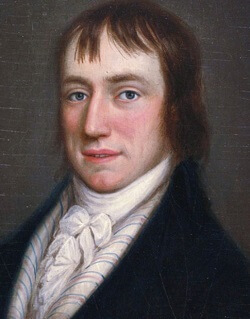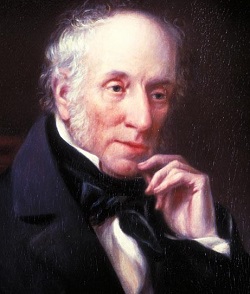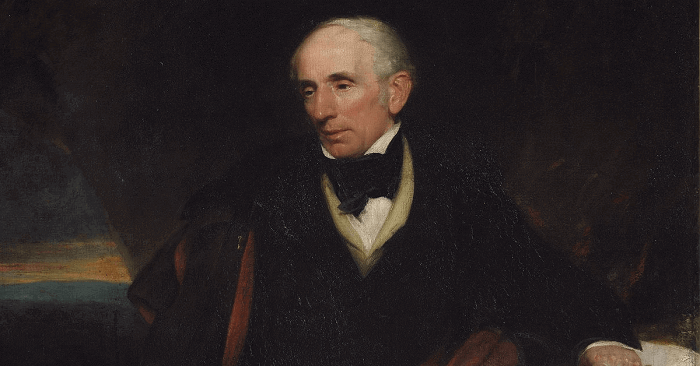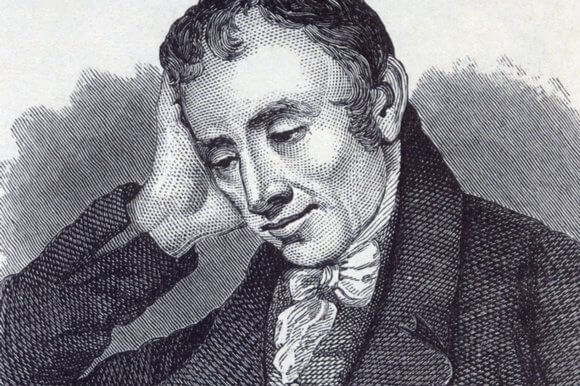William Wordsworth
William Wordsworth was a well-known English poet heavily involved in the English Romantic works. In a joint effort with Samuel Taylor Coleridge, William published the 'Lyrical Ballads' in 1798. William Wordsworth is most widely recognized for bringing off the Romantic era in English literature. He was born in the Lake District, famed for its magnificent lakes, mountains, and woods in North West England, and thus, he had profound affection and regard for nature as a child. His love of nature had a massive effect on his attitude and work. Read the article to know more aspects of his life. Early Life
William Wordsworth was born in Cockermouth, Cumbria, on April 7, 1770. His father worked as an attorney.Wordsworth's parents passed before he turned 15, leaving him and his four other siblings under the supervision of various relatives. Wordsworth loved nature as a young man, expressed in much of his poetry. While studying at Cambridge University, Wordsworth spent his summer vacation on a walking tour of Switzerland and France. He became a supporter of the French Revolution's beliefs. He began writing poetry while still in school, but none of his works was printed until 1793. EducationWordsworth's schooling started at home, where his mother, Ann Cookson, gave him his first lessons. He was enrolled in a local grammar school in the English Lake District village of Hawkshead when he was eight years old. He had a strong literature, Latin, and Greek education from this institution, Hawkshead Grammar School. Wordsworth began his formal education at St. John's College in Cambridge in 1787 when he was 17 years old. However, he believed that the academic atmosphere at Cambridge was uninteresting and did not fit with his artistic tendencies. Instead, Wordsworth spent much time admiring the Lake District's natural splendor and taking long walks through the countryside, which would later influence much of his poetry. Wordsworth received education outside of classroom settings as well. He was an avid reader and admired nature, which he saw as a vital source of knowledge and inspiration. His lyrical sensibilities were shaped by his own experiences, observations, and relationships with nature. His association with Samuel Taylor Coleridge, another eminent Romantic poet, greatly impacted Wordsworth's education. The well-known poetry collection "Lyrical Ballads," released in 1798, was a joint effort between Wordsworth and Coleridge. Due to its emphasis on everyday language, relatable themes, and expressing individual feelings, this anthology represented a fundamental shift in English poetry. Career
Young William discovered his passion for poetry while attending Hawkshead Grammar School. In 1787, he began his career as a poet by publishing a sonnet in The European Magazine. He visited Europe while studying at St John's College in Cambridge. This experience profoundly shaped his life interests and empathy, exposed him to the struggles of an average man, and inspired his poems. In 1793, he released 'An Evening Walk and Descriptive Sketch,' a poetry collection that boosted his career. In 1795, he met author Samuel Taylor Coleridge. Soon after meeting him, the most important work of the English Romantic Movement, 'Lyrical Ballads,' was published in 1798 due to their teamwork. In 1807, at the peak of his career, he wrote 'Poems, in two volumes.' In 1810, he released 'Guide to Lakes,' then 'The Excursion,' in 1814, and 'Laodamia,' in 1815. Major Works of William Wordsworth
William Wordsworth was one of the earliest English Romantic poets, and his collaboration with Samuel Taylor Coleridge to release "Lyrical Ballads" set off a trend of romanticism in English literature. It would be best to read the following William Wordsworth's most renowned poems.
Personal LifeWhile on a student trip to France, William Wordsworth fell in love with Annette Vallon, a French lady he met. She had a daughter with her, Caroline, so he did not marry her. He did everything he could to care for her daughter. Later, Wordsworth married Mary Hutchinson, a longtime friend, in 1802. Wordsworth's personal life became quite tough during the following few years as two of his children died, and his brother was lost at sea. Wordsworth relocated from Grasmere to Ambleside. Although it was never quite as good as his earlier efforts, he kept writing poetry. He didn't write much after 1835. He received a government pension in 1842 and was named poet laureate the following year. Few Other Facts
Why We Should Read the Work of WordsworthRomanticism was a European artistic, cultural, lyrical, and philosophical movement that began at the end of the 18th century. Romanticism was defined by its stress on feeling and independence. It can also be defined as the celebration of all things historical and contemporary, with a preference for the medieval over the classical. Wordsworth is regarded as one of Romanticism's most influential thinkers and characters. He is recognized as a poet interested in spiritual and cognitive exploration, fascinated with the individual connection to the environment, and a strong proponent of integrating common people's terminology and voice inflections in poetry. Here are some significant reasons to read William Wordsworth. 1. For The Love of Nature: Wordsworth will help you find love for nature and boost your commitment to defend it in today's world when the economic climate is deteriorating every day. Wordsworth's strong affection for nature's "beautiful shapes" was evident from an early age. The Wordsworth children lived in a vintage paradise along the Derwent River, which ran past the terraced garden below the large home. Several of Wordsworth's writings are about the natural world's majesty and magnificence, reflecting this strong relationship with nature. I wandered lonely as a cloud,' 'Composed upon Westminster Bridge,' 'Tintern Abbey,' and other works immerse the reader in a surreal interaction with nature.' 2. For The Love of Beautiful Quotes: Wordsworth, a romantic poet, wrote many great works that captivated people's emotions. He wrote several fantastic sentences that were later turned into quotations. The following are some of his quotations:
Death and LegacyWilliam Wordsworth died of pleurisy on April 23, 1850, at Rydal Mount, Westmorland, England. He was buried in Grasmere's St. Oswald's Church. His wife, Mary, released The Prelude, also known as Poem to Coleridge, a few months after his death. He was the first and only poet laureate to compose no official verses, which he did in 1843. ConclusionWilliam Wordsworth played a significant role in the Romantic literary movement and enjoyed a noteworthy life as a poet. His profound love of the natural world and his reflective and lyrical writing revolutionized English poetry and made a lasting impression on the literary community. Wordsworth developed a lifelong appreciation of the natural world through his early experiences in England's Lake District. He believed that nature carried deep wisdom and spiritual meaning; therefore, his love of it became a significant motif in his poems. He still has no equal when capturing the splendor and force of nature in verse. The partnership between Wordsworth and Samuel Taylor Coleridge throughout his career and the release of "Lyrical Ballads" in 1798 were key moments in the development of English literature. They pushed the boundaries of conventional poetic norms and ushered in a new period of Romantic poetry with their emphasis on common language, daily issues, and the expression of personal feelings. Wordsworth served as England's poet laureate from 1843 until he died in 1850, during which time he continued to inspire and have an impact on other poets and readers. His writings included topics like nostalgia, childhood, and the limitless potential of the human mind. His poems praised the beauty and importance of commonplace human experiences and created a strong sense of connectedness to the natural world. Wordsworth's legacy lies in his ability to capture the essence of the human experience and convey it through evocative and introspective verse. His contributions to literature continue to be celebrated, studied, and cherished, solidifying his position as one of the greatest poets in English literary history.
Next TopicSridevi
|
 For Videos Join Our Youtube Channel: Join Now
For Videos Join Our Youtube Channel: Join Now
Feedback
- Send your Feedback to [email protected]
Help Others, Please Share









